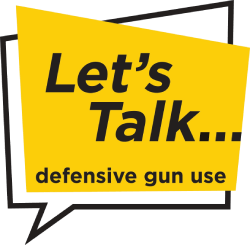As a firearms instructor, my main concern is ensuring everyone is safe when handling guns. In order to stay safe, it is essential to follow the four basic firearm safety rules to prevent accidents and ensure the well-being of yourself and those around you. These are guidelines and the base you will build on as you train. Everyone, from beginners to experienced shooters, needs to follow the same rules.
Mistakes happen, but if you follow these firearm safety rules, you can minimize potentially deadly outcomes. He was a driving force behind the creation of modern firearms training, which included his version of the “Four Firearm Safety Rules.”
History Of Firearm Safety Rules
In 1976, Jeff Cooper established what would become known as the Gunsite Academy, originally called the American Pistol Institute (API).
Mark Hanbury Beaufoy made Vinger and was a firearms enthusiast who wrote a poem in 1902 that included the lines “Never shoot where you can’t see” and “Never let your gun
pointed at anyone. That it may unloaded matters not the least to me.”

Other organizations, like the NRA and the National Shooting Sports Foundation (NSSF), have their own versions of firearm safety rules.
What are the Four Rules of Firearm Safety?
Rule 1: Treat Every Firearm As If It’s Loaded
Always assume a firearm is loaded and ready to fire when handling it. Never take unnecessary risks, even if you are sure the gun is unloaded. By adhering to this rule, you develop the habit of exercising caution and preventing negligent discharges.
Whether you are at the range, in the field, or your own home, I cannot stress the importance of this rule enough. More than one person has handed me a gun, claiming it was unloaded when, in fact, it had a live round ready to go.
Rule 2: Always Point the Gun In a Safe Direction
Keep the muzzle (the front end of the barrel) always pointed in a safe direction. A safe direction is one where no one could get hurt, and nothing would get hit in the event of an accidental or negligent discharge.
I wouldn’t want to be the one to explain to the police why I put a hole in my wall and ended up hitting the neighbor’s house.
Rule 3: Keep Your Finger Off The Trigger Until You are Ready to Shoot
Your finger should remain off the trigger until you are ready to fire. This helps prevent negligent discharges, which can happen if your finger is inside the trigger guard and you are not ready to shoot.
In an entry-level class, I try to get my students to put their trigger finger higher than usual so I can see it easier from a distance. I’ve had guns with such a light trigger that barely touching it would make it go off.
Rule 4: Know Your Target and What’s Beyond
Before squeezing the trigger, be sure of your target and what lies beyond it. Bullets can travel a long way and can go through walls, trees, and anything else that gets in their way. Before you take a shot, you should be positive about what you are shooting at and what is behind it.
This rule reinforces the need for situational awareness and being aware of what you might hit besides the bad guy. People standing around might run across the path the bullet will travel if you have to engage a threat. Having to defend yourself in a crowd complicates an already difficult situation.
Following these four basic firearm safety rules is necessary for anyone handling guns. Always prioritize safety, and make it a habit to follow the four basic rules of firearm safety.
By treating every firearm as if it’s loaded, keeping the muzzle pointed in a safe direction, maintaining trigger discipline, and knowing your target and what lies beyond, you significantly reduce the risk of accidents or someone getting hurt.



[…] that I have found that if you handle firearms long enough, that will happen. Luckily for me, of the four rules governing firearm safety, I was fortunate enough to be following rule number two. I had the firearm pointed in a safe […]